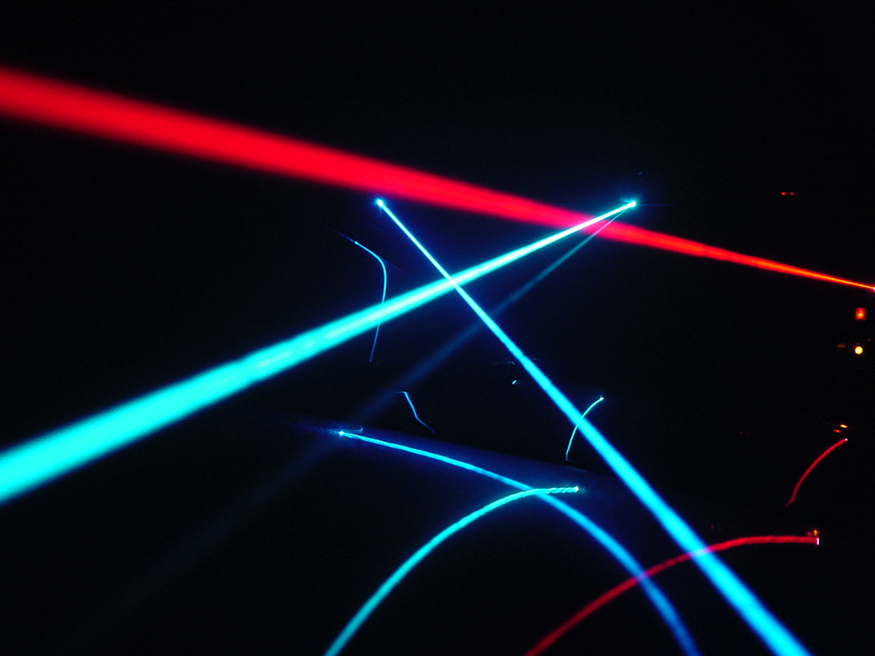| << Chapter < Page | Chapter >> Page > |
By the end of this section, you will be able to:
The information presented in this section supports the following AP® learning objectives and science practices:
Many properties of matter and phenomena in nature are directly related to atomic energy levels and their associated excitations and de-excitations. The color of a rose, the output of a laser, and the transparency of air are but a few examples. (See [link] .) While it may not appear that glow-in-the-dark pajamas and lasers have much in common, they are in fact different applications of similar atomic de-excitations.

The color of a material is due to the ability of its atoms to absorb certain wavelengths while reflecting or reemitting others. A simple red material, for example a tomato, absorbs all visible wavelengths except red. This is because the atoms of its hydrocarbon pigment (lycopene) have levels separated by a variety of energies corresponding to all visible photon energies except red. Air is another interesting example. It is transparent to visible light, because there are few energy levels that visible photons can excite in air molecules and atoms. Visible light, thus, cannot be absorbed. Furthermore, visible light is only weakly scattered by air, because visible wavelengths are so much greater than the sizes of the air molecules and atoms. Light must pass through kilometers of air to scatter enough to cause red sunsets and blue skies.
Let us consider the properties of a tomato from two different perspectives. When we try to explain the color of a tomato, we must consider the tomato as a system with properties that depend on its internal structure and the interactions between various parts. The internal structure of the tomato (specifically, the behavior of its pigment molecules) is very important and must be understood. Unlike a hydrogen atom, the energy level structure of a pigment molecule in a tomato is much more complicated. There are a very large number of energy levels, and the energy differences between these levels correspond to many different parts/colors of the visible spectrum, except for red.
So the photons that can be absorbed by these pigment molecules include every energy (or wavelength) in the visible spectrum except energies (or wavelengths) in the red part of the spectrum. Because these molecules absorb most of the visible photons, but reflect red photons, the color of the tomato appears red to our eyes. Without understanding the internal structure of the tomato pigment “system,” we would have no way of explaining its color.
Now consider a tomato in free fall. It accelerates toward the Earth at a rate of 9.8 m/s 2 , and we can say this with confidence without knowing anything about the internal structure of the tomato. In this case, we refer to the tomato as an object rather than a system. We only need to know the macroscopic properties of the tomato (its mass) in order to understand the force acting on the tomato.

Notification Switch
Would you like to follow the 'College physics for ap® courses' conversation and receive update notifications?